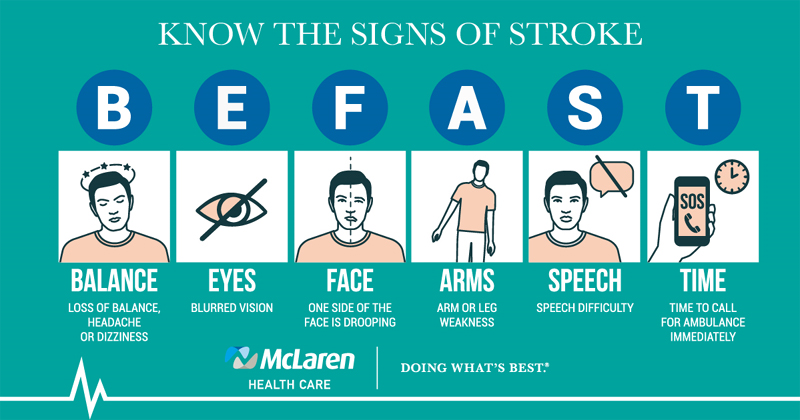Stroke Education
About Stroke
About Stroke
Cerebrovascular disease refers to a group of conditions that affect the supply of blood to the brain, causing limited or no blood flow to the affected areas. One such condition is stroke. A stroke can occur when a blood vessel that carries oxygen and nutrients to the brain becomes blocked by a clot or bursts. When that happens, part of the brain cannot get the blood and oxygen it needs and it starts to die.
Types of Stroke
Ischemic Stroke (Clots).
An ischemic stroke is most common and is caused when a blood vessel inside the brain is clogged or blocked off.
Hemorrhagic Stroke (Bleeds).
This is caused when a blood vessel in the brain bursts causing blood to leak into the brain tissue and is called an intracerebral hemorrhage. Another type of hemorrhagic stroke occurs when a weakened vessel leaks into the area around the brain and is called a subarachnoid hemorrhage.
Transient Ischemic Attack (TIA).
This is a temporary blockage of blood flow to the brain. Since it doesn’t cause permanent damage, it might seem like no big deal. But ignoring it is a big mistake because a TIA may signal a full-blown stroke ahead.
Stroke Education and Risk Factor Modification
For a comprehensive education book about stroke, treatment, therapy, diet, medication and post stroke care and FAQ’s, please use the link below to access the American Heart Association “Let’s Talk About Stroke” education fact sheet library.
American Heart Association “Let’s Talk About Stroke” education fact sheet library
American Heart Association "Life's Essential 8"
With strokes, it pays to BE FAST
Two million brain cells die each minute after a stroke occurs. The sooner you recognize the symptoms and seek help, the better. Every minute from stoke to treatment counts. This is why we say, with stroke-time equals brain.
If you or your loved one experiences SUDDEN ONSET of any of the following symptoms should call 911 immediately to expedite your care:

-
BALANCE - Loss of balance or dizziness
-
EYES - Blurred or double vision
-
FACE - One side of the face is drooping
-
ARMS - Arm or leg weakness
-
SPEECH - Speech difficulty
-
TIME - Time to call for ambulance immediately or Terrible Headache
Stroke Support Groups
The McLaren Stroke Network offers a free education and support program series for stroke patients, people at high risk of a stroke, family members of stroke patients, and the community. Series speakers represent a number of different disciplines including physicians, speech language pathologists, physical and occupational therapists, dieticians, pharmacists, nurses, and individuals from the community. Educational topics change annually and are chosen based on group needs and requests. The first half of the meeting is reserved for the speakers and any questions from the attendees in an effort to improve the participants knowledge of stroke, therapies and treatment, and prevention. The second half of the meeting is allocated for support for the survivors and their friends, family and caregivers. This is especially important now, when families and friends are not able to see each other as much in person.
Due to the COVID-19 pandemic and patients in rural areas, the support group has gone virtual. The McLaren Stroke Network is pleased to provide access to stroke education and support to as many stroke patients and caregivers in Michigan as possible, no matter where they live. The virtual options for stroke education and support include different dates, times, speakers, and topics. Attend the group that best fits your schedule. You are welcome to attend as many group sessions as you would like. In-person groups are also available at certain McLaren subsidiaries.